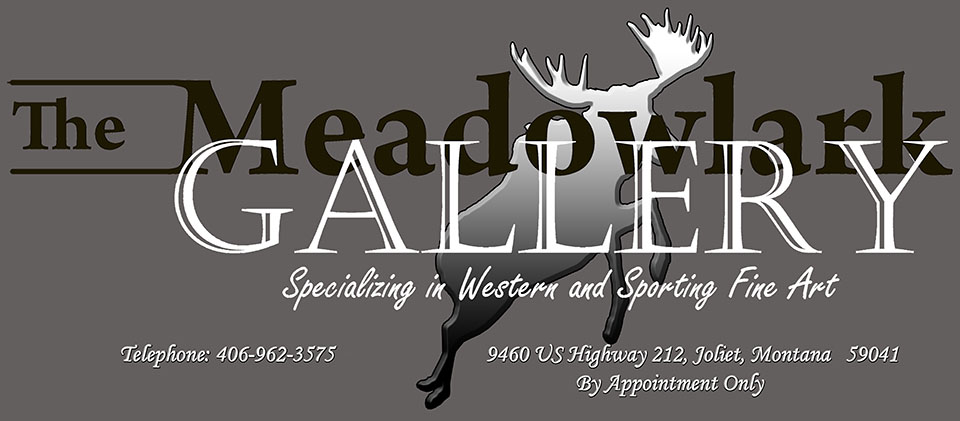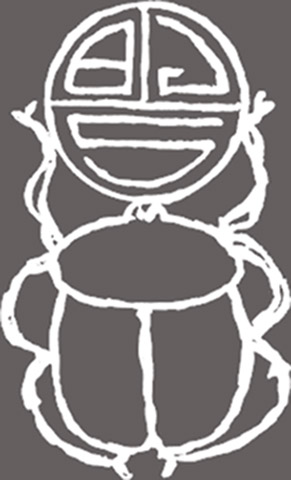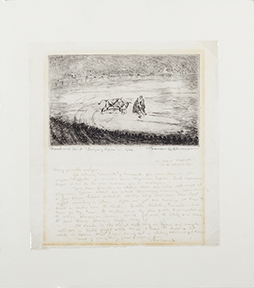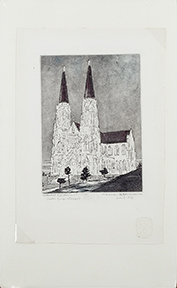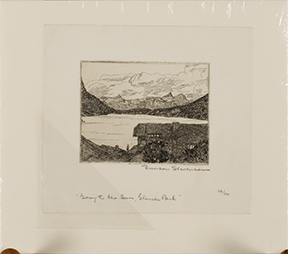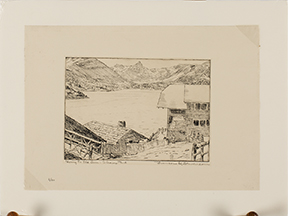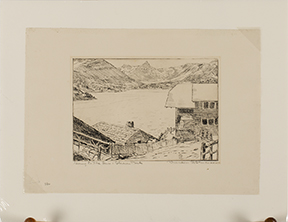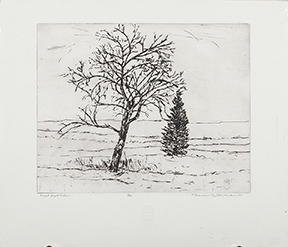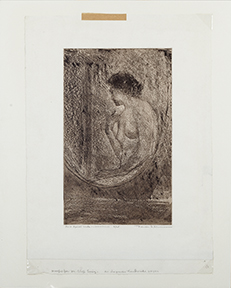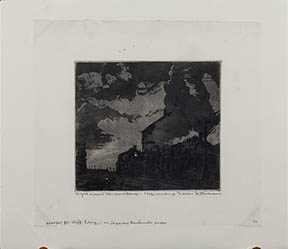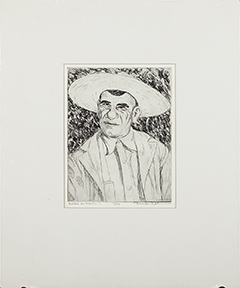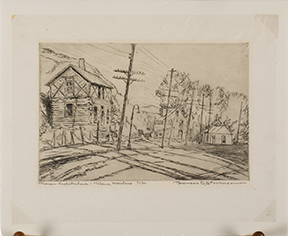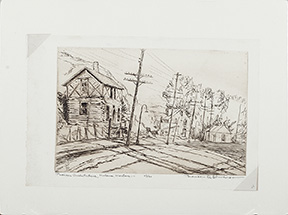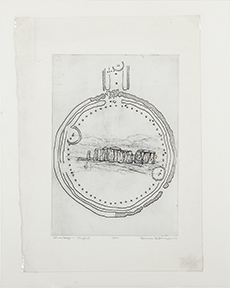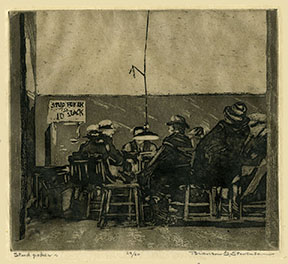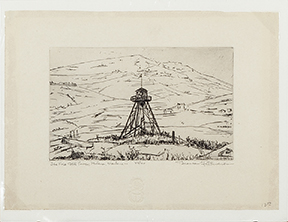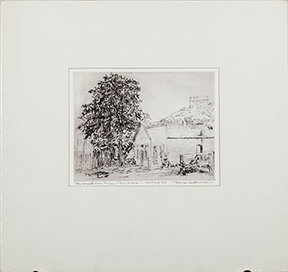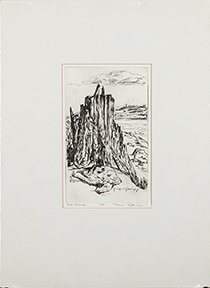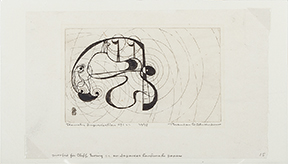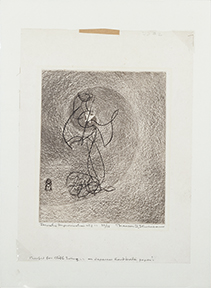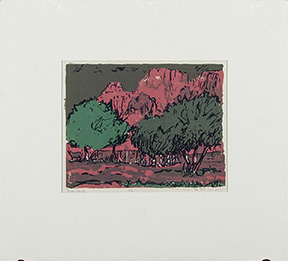|
|
||
|
Branson Graves Stevenson (1901-1989) |
||
|
Branson Graves Stevenson was born in Franklin County, Georgia on April 5, 1901 and died in 1989. On his father's farm in Georgia he was the youngest of a family of eleven. After living on the farm for several years, the family moved to Atlanta, Georgia so that the children could have a better education. When his mother passed away in 1912, his father moved to Panama where he was a steam shovel engineer for the Panama Canal. In 1914, he returned to Barnesville, Georgia to attend an agricultural school. After completing courses at the agricultural school, he returned to Panama where he graduated from high school. During his high school days he began to be more and more interested in art. He completed a design for the Liberty Loan Committee of the Panama Canal Zone for their next bond selling campaign. Branson studied at the Instituto Nacional de Panama which was his only art instruction. He worked as a stenographer in Colombia, then came to Helena, Montana where he worked for his brother who had a large distributorship for Studebaker. In addition to learning about buying and selling cars, he had a small art studio. His brother was then investing in the oil fields, sending Branson to the Studebaker branch in Lewistown and then moved after many months to the Studebaker branch in Great Falls. After arriving in Great Falls, he met Charles M. Russell who did not pay any attention to him but his apprentice, Joe DeYong and Branson became good friends. The Sunburst Oil and Gas Company was established by Lon Stevenson with the assistance and financial interests of his brothers. While waiting for the drilling, Branson worked for the Great Falls Auto and Truck Company and as well at the Swanzey Advertising Agency. "Cracking" became a more efficient way to produce products than what was done by the Sunburst Oil and Gas Company. In 1923, Joe DeYong contacted Branson about making an etching. Both artists had never discovered this medium before. From this point on the medium of etching became an integral part of Branson Stevenson's career. While still at the Swanzey Advertising Agency, during the late 1920's, Branson studied ceramics. In 1925, Branson married Violet Palmer. In 1931, he became employed with the White Eagle Oil Company. Later he became the branch manager for all of Montana under the firm name of Socony Vacuum Oil Company. Branson also at this time served as the vice chairman for the American Artists Professional League. In 1942, he arranged for a display of seventy five prints obtained from the Pan American League. During the war effort, he designed many works for the benefit of the bond sales. In the late 1940's, he would submit his work for fair exhibits under a different name as NOSNARB NOSNEVETS. He told the art directors that the art was done by a Russian on our Alaska Ferrying Command Air Base. This allowed him to hear from even people he knew about what they felt about his art. Joe Howard who wrote, "Montana...High, Wide and Handsome." He put the following poem in the Great Falls Tribune after finding out about the artwork submitted under a different name. ODE ON A NEWSPAPER PORTRAIT Can this be my old friend Branson, Can this be the oil-smeared cynic, Can this be who, all dreams gone, J.K.H. In 1947, Branson Stevenson took a pottery course at the College of Great Falls. His weekends were now devoted to developing pottery and inventing his own glazes. Archie Bray became a close friend and Branson assisted him with the building of the nonprofit educational organization. Branson Stevenson created several new discoveries for the world of pottery. Branson Stevenson was a founding member of the Montana Institute of the Arts which began in 1948. In 1953, the Charles Russell Art Gallery opened in Great Falls and Branson was the first chairman of the board. During the 1950's, Branson was very busy with his own one man shows including the Helena Art Center, the Montana State University Exhibition, and the Pacific Northwest Art Exhibition. Branson felt that this most favorite work was his first etching, "Night Around The Roundhouse." As to lithography, he felt that "Rhubarb" was the one and that in pottery it was "Double-Dunk Bowl." Branson Stevenson retired from the Mobil Oil Company in 1960. In 1963, he became a lecturer on art at the College of Great Falls and wrote articles for craft periodicals. He was a painter, printmaker, sculptor, craftsman, and teacher. His work in the Montana Institute of the Arts in Helena, Montana; the C. M. Russell Museum in Great Falls, Montana; the Montana Historical Society in Helena, Montana; and the University of Oregon in Eugene, Oregon. His scarab logo that he signed his work with was a beetle including his monogram within a circle. The beetle came from the "tumble bug" found in Georgia and where Branson spent his early years. The tumble bug was so named because it pushed ahead of itself a ball of dung. Source: |
||
|
View high resolution images of works by Branson
Graves Stevenson when available. |
||
Have questions about these images? E-mail Meadowlark Gallery!!Home Page / Biography Library / Bronze / Collectibles / Etchings / Paintings / Pen and Ink / Graphite / Working Decoys Gallery Credentials / Firearms / Triangle Z Ranch Furniture / Customer Percs |
||
